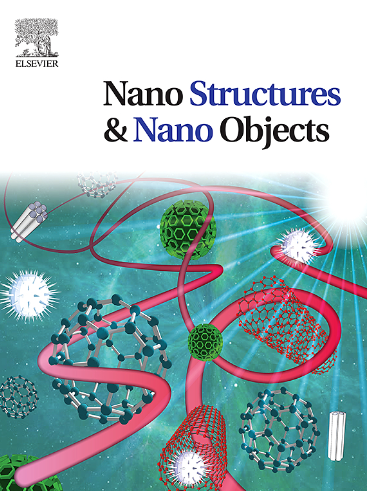基于酯化纤维素的准固体电解质组件在高效染料敏化太阳能电池中的潜在应用
IF 5.45
Q1 Physics and Astronomy
引用次数: 0
摘要
本研究探索了利用纤维素和邻苯二甲酸盐纤维素制备染料敏化太阳能电池(DSSC)的准固体电解质组件。这种合成的DSSC包含了一种离子液体([Bmim]I)和一个I₃⁻/I⁻还原穿梭体,在100 mW·cm⁻²的光强下,其光转化效率达到了5.86 %。与大多数其他准固态系统相比,这是一个值得注意的改进,通常性能在~ 4.5-5.2 %的范围内,强调了它在设计可持续性能源设备方面的潜力。这种准固态DSSC效率的提高归因于离子电导率的提高,这是由于接枝纤维素中氧原子的增加。这些氧原子与阳离子部分相互作用,促进跳跃机制,使自由的阴离子部分驱动氧化还原偶对。这项研究强调了基于生物聚合物的准固体电解质的潜力,为DSSC技术的可持续绿色光转换铺平了道路。本文章由计算机程序翻译,如有差异,请以英文原文为准。
Esterified cellulose-based quasi-solid electrolyte assembly for potential application in efficient dye-sensitized solar cell
This study explores the development of a quasi-solid electrolyte assembly using cellulose and phthalated cellulose for dye-sensitized solar cells (DSSC). The fabricated DSSC, incorporating phthalated cellulose, an ionic liquid ([Bmim]I), and an I₃⁻/I⁻ redox shuttle, achieved a photo-conversion efficiency of 5.86 % under a light intensity of 100 mW·cm⁻². It is a noteworthy improvement over most other quasi-solid-state systems, typically with the performance in the range of ∼4.5–5.2 %, underlining it potential for designing energy devices using sustainability. The enhanced efficiency of this quasi-solid-state DSSC is attributed to improved ionic conductivity, resulting from the increased oxygen atoms in the grafted cellulose. These oxygen atoms interact with cationic moieties, facilitating a hopping mechanism that allows free anionic moieties to drive the redox couple. This research highlights the potential of biopolymer-based quasi-solid electrolytes, paving the way for sustainable, green photoconversion in DSSC technology.
求助全文
通过发布文献求助,成功后即可免费获取论文全文。
去求助
来源期刊

Nano-Structures & Nano-Objects
Physics and Astronomy-Condensed Matter Physics
CiteScore
9.20
自引率
0.00%
发文量
60
审稿时长
22 days
期刊介绍:
Nano-Structures & Nano-Objects is a new journal devoted to all aspects of the synthesis and the properties of this new flourishing domain. The journal is devoted to novel architectures at the nano-level with an emphasis on new synthesis and characterization methods. The journal is focused on the objects rather than on their applications. However, the research for new applications of original nano-structures & nano-objects in various fields such as nano-electronics, energy conversion, catalysis, drug delivery and nano-medicine is also welcome. The scope of Nano-Structures & Nano-Objects involves: -Metal and alloy nanoparticles with complex nanostructures such as shape control, core-shell and dumbells -Oxide nanoparticles and nanostructures, with complex oxide/metal, oxide/surface and oxide /organic interfaces -Inorganic semi-conducting nanoparticles (quantum dots) with an emphasis on new phases, structures, shapes and complexity -Nanostructures involving molecular inorganic species such as nanoparticles of coordination compounds, molecular magnets, spin transition nanoparticles etc. or organic nano-objects, in particular for molecular electronics -Nanostructured materials such as nano-MOFs and nano-zeolites -Hetero-junctions between molecules and nano-objects, between different nano-objects & nanostructures or between nano-objects & nanostructures and surfaces -Methods of characterization specific of the nano size or adapted for the nano size such as X-ray and neutron scattering, light scattering, NMR, Raman, Plasmonics, near field microscopies, various TEM and SEM techniques, magnetic studies, etc .
 求助内容:
求助内容: 应助结果提醒方式:
应助结果提醒方式:


